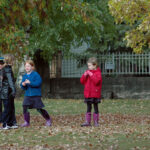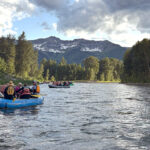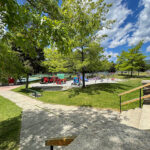Home »

Recreationists in denial
Op-Ed Commentary
Recently while walking in the Dry Gulch Recreation Area, or what is formally known as the Radium Stoddart Big Horn Sheep Winter/Spring Range and Refuge Area, I encountered a network of illegally constructed mountain bike trails that were cut into the hillsides below the pull outs on the Radium Hill. These unauthorized trails have permanently destroyed about 10,000 square meters (about two Home Hardwares) of the most endangered and critical arid grassland habitat in the Rocky Mountain Trench.
The trails were deliberately built so that silent cyclists pop over ridges directly into sheep refuge areas with the likely consequence that animals are spooked onto Highway 93/95 and into on-coming traffic.
I Googled an American mountain biker website, trailforks.net, that indiscriminately promotes mechanized recreation and found that these trails were mapped as PowerWagon and Stinking Badger. A third mountain bike trail follows the bluffs overlooking the Columbia Wetlands Wildlife Management Area, Perimeter Rut.
Greenways, a promoter of urban recreation, initiated the use of the Radium Stoddart Big Horn Sheep Winter Range as a recreation area by inviting hikers and cyclists to use the historic Old Coach Road. This invitation was usurped by mechanized recreationists as an open invitation to create another free-for-all mountain bike jungle.
Already the Radium Stoddart Big Horn Sheep Winter/Spring Range has been reduced in size by 80% by recreationists destroying habitat, forest ingrowth and residential development. Mechanized recreationists continue to put pressure on this critical rangeland and expand their activities.
It is an interesting word, “Recreation,” to create something again. Can someone tell me the purpose of recreating functional wildllife habitat? And more to the point what is wildland habitat being recreated into? Gouged out mountain bike tracks?
Denial about wildland habitat destruction by mechanized recreation, (mountain bikers, ATV riders and others) is borne out of necessity as an irrational tactic to keep from acknowledging the consequences of their actions. At worst mechanized recreationists will destroy thousands of square kilometres of low elevation habitat before their destructive free for all comes to an end.
 Mechanized recreationists, mountain bikers in particular, have built a cult where you can’t question each other or the order of things, otherwise the group will turn on you. This maintains their echo chamber and makes everyone outside of it their enemies. This culture of denial embraces an “outlaw” identity that is fed by the aggressive advertising of bike manufacturers, memories and stories of adrenalin rushes and personal delusions about the impact of their activities.
Mechanized recreationists, mountain bikers in particular, have built a cult where you can’t question each other or the order of things, otherwise the group will turn on you. This maintains their echo chamber and makes everyone outside of it their enemies. This culture of denial embraces an “outlaw” identity that is fed by the aggressive advertising of bike manufacturers, memories and stories of adrenalin rushes and personal delusions about the impact of their activities.
It is clear that this culture of denial has infiltrated the offices of the province as land managers drag their feet and look the other way while choosing not to enforce the Forest and Range Practices Act (SBC 2002) c.69 Section 57 that states: “Unless authorized in writing by the minister or under another enactment, a person must not (a) construct, (b) rehabilitate, or (c) maintain a trail or other recreation facility on Crown Land.”
Denial has a cost; not just in believing lies but in hopes of changing the future. If you think the current mechanized recreation free-for-all on Crown land can continue contrary to the evidence that habitat is being destroyed, you will waste our wildland resources and once that happens you will have achieved your goal.
Further degradation will not be possible because you cannot destroy something that no longer exists. If instead you accept reality, you can be part of change before it’s too late.
I close with a position statement from the Lake Windermere Rod and Gun Club that goes something like this: “A recreation plan needs to be first for wildlife and environment, a design that we humans fit into rather than a set of rules to accommodate our desires.”
Lead and above photo; the constructed mountain bike trail through critically reduced Big Horn Sheep Winter Spring Range. Peter Christensen photo








